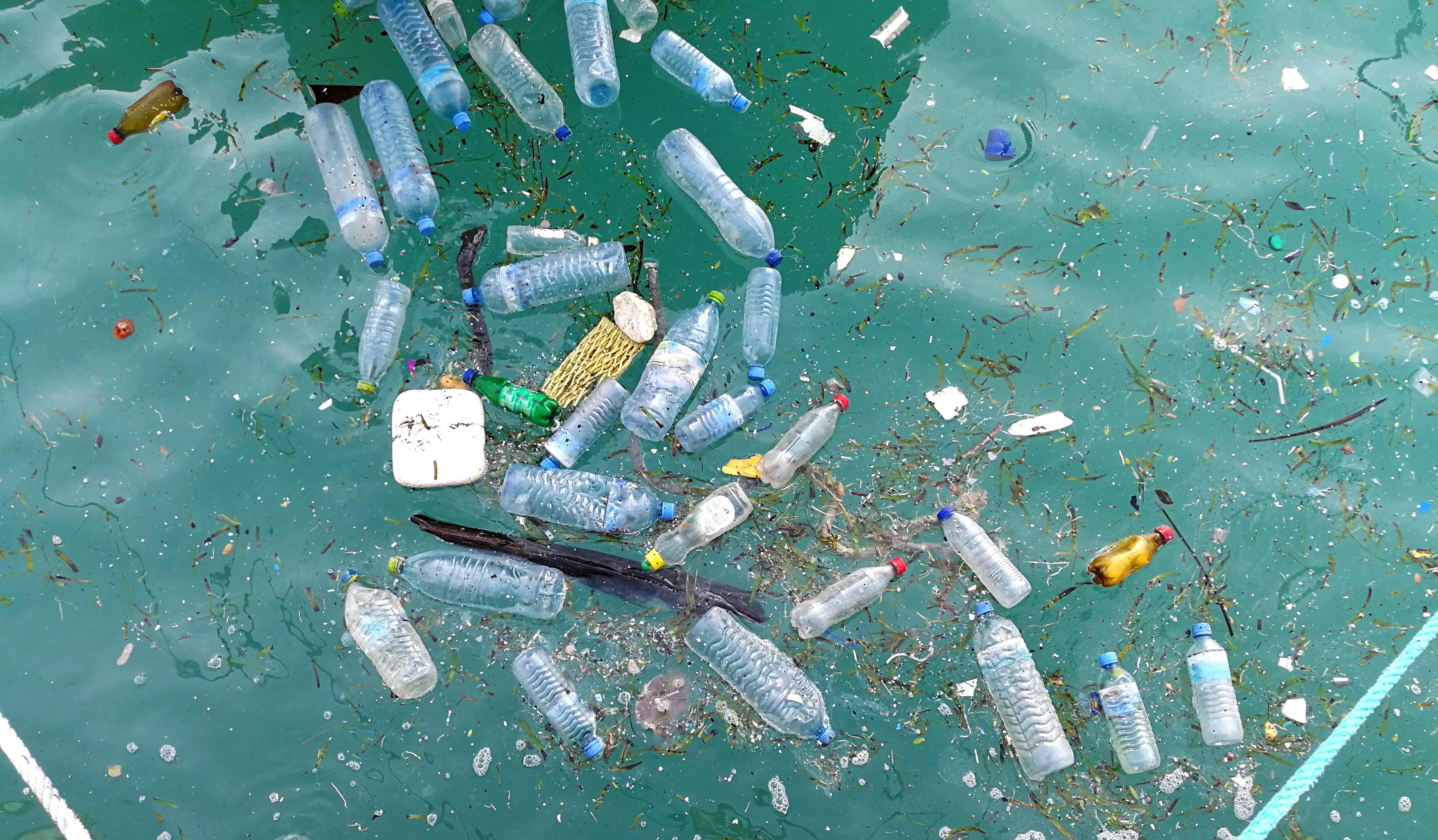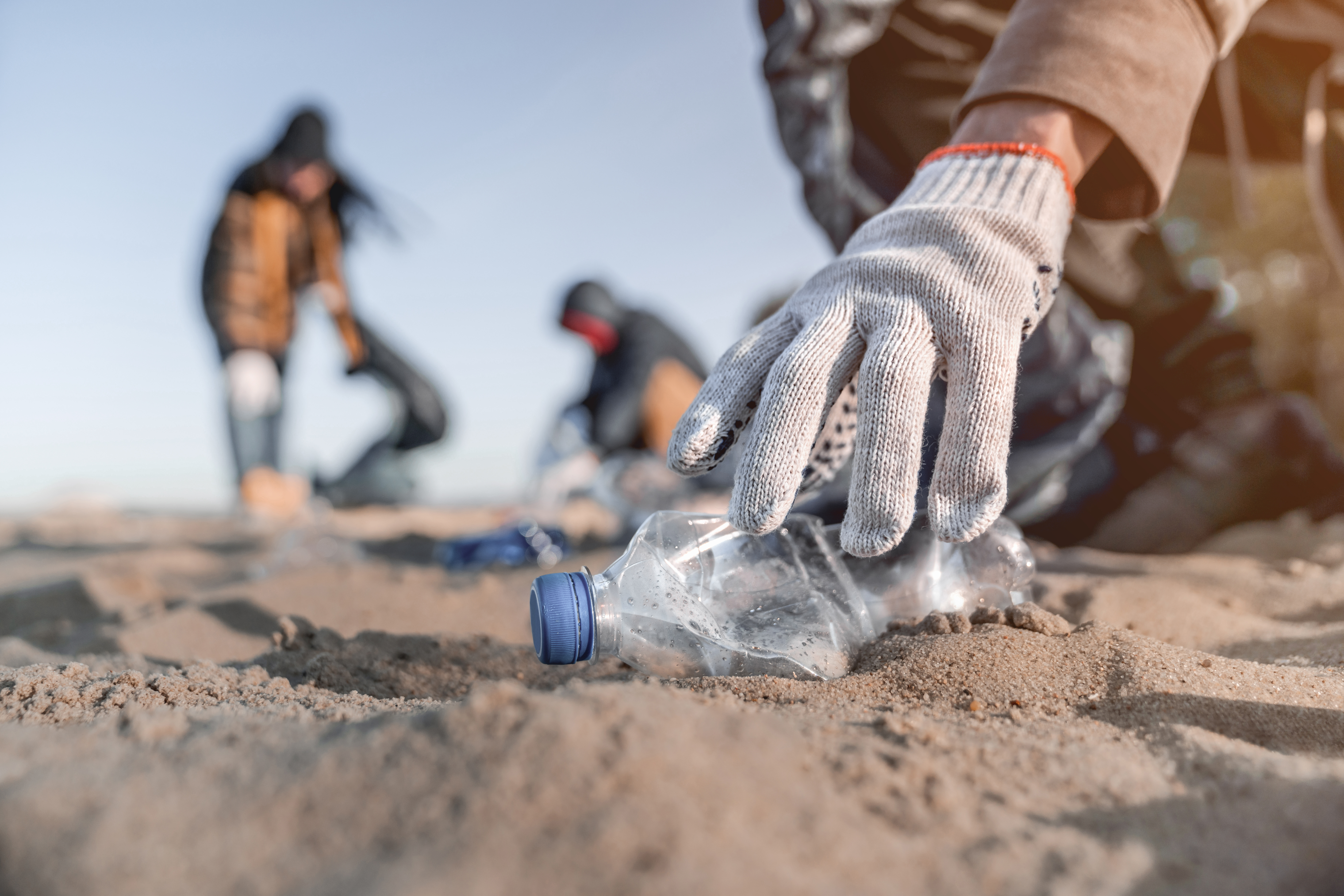The issue of plastic pollution, particularly in our oceans, is a serious environmental crisis. Here, we will explore the causes of plastic pollution, confront the hard facts, and consider effective ways you can contribute to a solution.
Jump to:
What is Plastic Pollution?
Plastic pollution occurs when plastic objects and particles accumulate in the environment, negatively impacting wildlife, their habitats, and humans. Plastics in the ocean are of particular concern due to their durability, high volume, and visual impact on natural landscapes.
How Much Plastic Ends Up in the Ocean?
It's alarming to note that each year, up to 12 million tonnes of plastic are dumped into the ocean. This staggering amount is equivalent to a truckload of rubbish per minute. The longevity of plastics means they persist in the ecosystem, breaking down into smaller particles, known as microplastics, without fully decomposing.
Recommended for you!
Best SellersThe 5 Major Causes of Plastic Pollution
Plastic pollution is an escalating environmental issue with roots deeply embedded in various human activities and industrial practices. Let’s examine the five principal causes contributing to this problem.
1. Overconsumption and Waste Mismanagement
The most significant driver of plastic pollution is the excessive production and disposal of plastic products. As societies have urbanised rapidly, consumer habits have shifted towards convenience-oriented products, predominantly made of plastic. This trend, coupled with a prevailing culture of disposability, where items are used briefly and discarded, has significantly increased plastic waste. Unfortunately, a substantial portion of this waste is not properly managed or recycled. Everyday items like single-use plastic bags, straws, and food packaging are major contributors, often ending up in landfills, or worse, in our waterways and oceans.
2. Inadequate Recycling and Lack of Alternatives
Another issue is the inadequate recycling infrastructure and processes worldwide. Despite the push towards recycling, the global recycling rate for plastics remains disappointingly low. This challenge is compounded by the lack of accessible and affordable alternatives to plastic products. Without viable substitutes, consumers and industries continue to rely heavily on single-use plastics, perpetuating the cycle of pollution.
3. Industrial Emissions and Microplastics
Industries contribute directly and indirectly to plastic pollution. Microplastics, which are small plastic pieces less than five millimetres in length, can be unintentionally released as byproducts of manufacturing processes. They are also intentionally added to products like cosmetics and cleaning agents. These tiny particles are hard to detect and remove from the environment, infiltrating marine and terrestrial ecosystems.
4. Ineffective Legislation and Policies
A lack of stringent regulatory policies regarding the production, use, and disposal of plastics contributes to the ongoing problem. In many parts of the world, regulations that govern waste management and recycling are either inadequately enforced or non-existent. This regulatory gap allows for continued environmental degradation and hampers efforts to transition to more sustainable practices.
5. Global Trade of Plastic Waste
The international trade in plastic waste also exacerbates the problem. Wealthier countries often export their plastic waste to less economically developed countries, which may lack the capacity to handle such volumes of waste effectively. This shifts the burden and complicates global efforts to control plastic pollution, as waste management standards and capabilities vary widely across borders.
Impact of Plastic Pollution on Marine Life and Humans

Plastic pollution poses a significant threat to marine life, human communities, and economic activities. This section explores the far-reaching consequences of plastics in our oceans, which extend beyond the visible litter on coastlines to the invisible hazards beneath the surface.
Threat to Wildlife and Biodiversity
Marine animals, from the smallest plankton to the largest whales, are affected by plastic pollution. Many sea creatures mistake plastic debris for food, leading to ingestion that can cause internal blockages, starvation, and even death. For instance, sea turtles often confuse plastic bags with jellyfish, one of their food sources. Moreover, entanglement in larger pieces of plastic or abandoned fishing gear can lead to injuries, restricted movement, impaired ability to hunt or escape predators, and often a slow and painful death.
Microplastics are small enough to be ingested by a wide range of marine species, from tiny zooplankton to larger fish, entering and moving up the food chain. This accumulation exposes apex predators and ultimately humans to potential health risks, as these particles can carry toxic substances absorbed from the ocean.
Economic and Aesthetic Impact
The visual and physical presence of plastics disrupts the natural beauty of coastal and marine environments, directly impacting tourism industries that rely on clean and attractive beaches and seas. Tourists are less likely to visit polluted areas, which reduces income for local businesses and economies, particularly in regions where tourism is a significant economic driver.
Plastic pollution also damages fisheries. Plastic debris can damage fishing gear, and fish stocks may decline due to the ingestion of plastics and related toxins. This affects the biodiversity of marine ecosystems and the livelihoods of fishing communities around the world.
Health Implications for Humans
The impact on human health is becoming a growing concern as microplastics and the chemicals they carry can enter our bodies through the consumption of seafood and even drinking water. Research is ongoing, but studies suggest that these plastics could contribute to health problems, including reproductive issues and an increased risk of certain cancers.
Social and Cultural Impact
Many coastal communities around the world have cultural practices and traditions deeply connected to the sea. Plastic pollution's degradation of marine environments affects both their economic stability and their cultural heritage, potentially leading to a loss of identity and changes in community structures.
Psychological Effects
The sight of polluted waters and beaches can lead to a sense of loss and helplessness among communities, potentially affecting mental health. The growing awareness of environmental degradation and its seemingly insurmountable scale can contribute to eco-anxiety, especially among younger generations who are acutely aware of the implications for their future.
6 Surprising Facts About Plastic Pollution
- Every day, approximately 8 million pieces of plastic find their way into our oceans.
- The Great Pacific Garbage Patch, a large area of ocean heavily polluted by plastics, covers an area twice the size of Texas, predominantly with microplastics.
- Microplastics have been detected in 83% of tap water samples worldwide and even in the deepest parts of the ocean, such as the Mariana Trench.
- Arctic Ice Contamination: Studies have found over 12,000 microplastic particles per litre in some Arctic sea ice samples, showing that plastic pollution reaches even the most remote regions.
- Over 800 marine species are known to be directly affected by plastic pollution through ingestion or entanglement.
How You Can Help Reduce Plastic Pollution

Plastic pollution is an immense challenge, but there are actionable steps that you can take to make a significant difference. By understanding how your choices and actions can impact the environment, you can contribute to the solution.
1. Make Informed Consumer Choices
Choose Reusables: One of the most effective ways to combat plastic pollution is to choose reusable products over single-use plastics. Carrying a reusable water bottle, coffee cup, and shopping bags can drastically reduce the amount of plastic waste you generate.
Support Sustainable Businesses: Support businesses that are committed to sustainable practices. Look for products made from recycled materials or companies that have robust recycling programs. Purchasing from companies that prioritise environmental responsibility encourages more businesses to adopt sustainable practices.
2. Participate in Clean-up Activities
Join Community Clean-ups: Participating in or organising clean-ups at your local beaches, rivers, or parks can have a direct impact on reducing plastic pollution. These activities serve as powerful educational tools by physically demonstrating the impact of plastic waste.
Educate and Inspire Others: While participating in these clean-ups, take the opportunity to educate others about the importance of these efforts. Sharing your experiences on social media or within your local community can inspire others to take action as well.
3. Support Policies and Initiatives
Advocate for Change: Supporting policies that aim to reduce plastic waste and improve recycling is crucial. This can involve everything from local community efforts to national policy changes.
Engage with Leaders: Reach out to your community leaders and policymakers to advocate for better waste management systems and stricter regulations on plastic production and use. Attending town hall meetings, signing petitions, and sending letters to representatives can all influence change.
Support Bans and Restrictions: Many places have started to implement bans or restrictions on single-use plastics such as straws, bags, and food containers. Supporting these policies and adapting to these changes positively contributes to reducing plastic waste.
Frequently Asked Questions About Marine Plastic Pollution
How does plastic enter the ocean?
Plastic enters the ocean through various pathways:
- Direct disposal into waterways: Littering along beaches and coastlines often leads directly to plastics entering the ocean.
- Improper waste management: Plastics that are not properly disposed of can be transported by wind and rain into drainage systems, rivers, and eventually the seas.
- Industrial sources: Microplastics can also come from larger industrial processes, including the production and washing of synthetic textiles and the degradation of larger plastic items during shipping and handling.
How much plastic is in the ocean in 2024?
Estimates suggest that by 2024, there could be over 250 million tonnes of plastic in the ocean. The amount increases annually as millions of tonnes of additional plastics are dumped into the ocean every year, highlighting the urgency for effective waste management and pollution prevention strategies.
Is 40% of the ocean plastic?
While it is an exaggeration to say that 40% of the ocean is plastic, vast areas of the ocean surface are heavily contaminated with plastic waste. The most infamous example is the Great Pacific Garbage Patch, where currents have concentrated large amounts of floating plastic debris.
What is a crazy fact about plastic pollution?
One astonishing fact is that microplastics have been found even in the Mariana Trench, the deepest part of the world's oceans. This indicates the pervasive nature of plastic pollution, affecting even the most remote and seemingly pristine environments.
How much plastic enters the ocean every day?
It's estimated that over 8 million pieces of plastic pollution find their way into our oceans every day. This equates to a significant and continuous flow of plastic that accumulates and impacts the marine environment.
How bad is plastic pollution?
Plastic pollution is a severe environmental issue. It affects nearly every marine and freshwater ecosystem globally, has dire consequences for wildlife and human health, and disrupts economic activities such as tourism and fishing. Its persistence means that the plastics we use today will trouble the natural environment for decades, or even centuries, to come.
Recommended for you!
Best SellersEmpowering Change Through Education
Understanding the scope of plastic pollution and its devastating effects can be overwhelming, but it's an important step towards making informed decisions and inspiring change.
If you’re passionate about learning more and making a difference, consider taking the Oceanography Diploma Course offered by the Centre of Excellence.
Why Centre of Excellence?
- Accessibility: We are committed to making transformative education accessible to all. Our Oceanography Diploma Course is priced to ensure that everyone interested in marine conservation has the opportunity to enrol without financial barriers.
- Flexibility: Our courses are designed to fit seamlessly into your life. You can progress at your own pace, fitting your learning around your schedule and commitments, making it easier to integrate your passion for the ocean into your daily life.
- Dedicated Support: When you enrol, you gain access to personalised tutor support and a community of like-minded learners. You are not just taking a course; you are joining a supportive network that encourages and guides you throughout your educational journey.
Special Invitation
We are delighted to offer the Oceanography Diploma Course at a special promotional price of only £29, saving you over £100!













